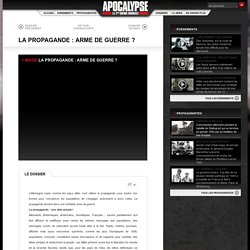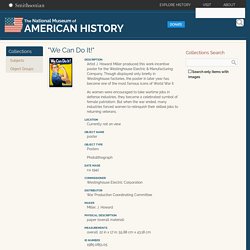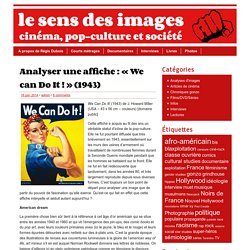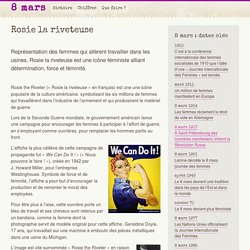

WE CAN DO IT. Analyse de wcdi. Analyse de wcdi. We can do it texte. We can do it texte. LA PROPAGANDE : ARME DE GUERRE ? Dossiers Apocalypse - TV5MONDE. Agrandire Rétrecir L’Allemagne nazie comme les pays alliés vont utiliser la propagande sous toutes ses formes pour convaincre les populations de s’engager activement à leurs côtés.

La propagande devient alors une véritable arme de guerre. La propagande : une idée simple ! Allemands, Britanniques, Américains, Soviétiques, Français… savent parfaitement qu’il faut diffuser et rediffuser sans cesse les mêmes messages aux populations, des messages courts ne véhiculant qu’une seule idée à la fois. Radio, cinéma, journaux, affiches mais aussi rencontres sportives, comme les jeux Olympiques de 1936, expositions, concerts, constituent autant d’occasions et de supports pour marteler des idées simples et endoctriner le peuple.
L’Allemagne maîtresse dans l’art de la propagande Hitler a très vite compris ce que la propagande pouvait apporter à son projet diabolique. . « Ici Londres… Les Français parlent aux Français… » La guerre des affiches Journaux officiels, journaux clandestins. We can do it - Histoire des Arts - Rapports de Stage - Ghtf. We can do it Arts du visuel Thématique → ?

Problématique : « Comment J. "We Can Do It!" Description Artist J.

Howard Miller produced this work-incentive poster for the Westinghouse Electric & Manufacturing Company. Though displayed only briefly in Westinghouse factories, the poster in later year has become one of the most famous icons of World War II. As women were encouraged to take wartime jobs in defense industries, they became a celebrated symbol of female patriotism. But when the war ended, many industries forced women to relinquish their skilled jobs to returning veterans. Location Currently not on view Object Name poster Object Type Posters Photolithograph Date made ca 1942 commissioner. Analyser une affiche : « We can Do It ! » (1943) We Can Do It!

(1943) de J. Howard Miller (USA – 43 x 56 cm – couleurs) [domaine public] Cette affiche a acquis au fil des ans un véritable statut d’icône de la pop-culture. Elle ne fut pourtant diffusée que très brièvement en 1943, essentiellement sur les murs des usines d’armement où travaillaient de nombreuses femmes durant la Seconde Guerre mondiale pendant que les hommes se battaient sur le front. Elle ne fut en fait redécouverte que tardivement, dans les années 80, et très largement reproduite depuis sous diverses formes. American dream La première chose bien sûr tient à la référence à cet âge d’or américain qui se situe entre les années 1940 et 1960 et qui vit l’émergence des pin-ups, des comic books et du pop art, avec leurs couleurs primaires vives (ici le jaune, le bleu et le rouge) et leurs formes épurées détourées avec netteté sur des à-plats unis. Antithèse La seconde chose qui frappe et qui interpelle dans cette image c’est sa construction paradoxale.
Une icône féministe. Sexism and Racism in the 1930s Essay - 547 Words. Help us make the StudyMode community even better.

Is this document helpful to you? If not, we have 1,500,000 more documents. Does the title, "Sexism and Racism in the 1930s", fit the document? Does this document look like it has spam content? Is this document correctly categorized as Periodicals > Literature ? If not which one would you say it is? Thanks for your Feedback! Sexism in the 1930’sIn the period of the 1930s in America there were lots of forms of discrimination: one of them was sexism. Most single women worked for a living, and so did a lot of married women.
Women did get the vote in America in 1920. Racism in the 1930sThe 1930's were a turbulent time for race relations in America. The Pop History Dig. Norman Rockwell’s ‘Rosie The Riveter’ cover for the May 29, 1943 edition of The Saturday Evening Post, was the first visual image to incorporate the ‘Rosie’ name.

“Rosie the Riveter” is the name of a fictional character who came to symbolize the millions of real women who filled America’s factories, munitions plants, and shipyards during World War II. In later years, Rosie also became an iconic American image in the fight to broaden women’s civil rights. After the Japanese bombing of Pearl Harbor in December 1941 and the full involvement of the U.S. in World War II, the male work force was depleted to fill the ranks of the U.S. military.
This came precisely at a time when America’s need for factory output and munitions soared. The U.S. government, with the help of advertising agencies such as J. Saturday Evening Post cover artist, Norman Rockwell, is generally credited with creating one of the popular “Rosie the Riveter” images used to encourage women to become wartime workers. J. C.
Rosie la riveteuse. Représentation des femmes qui allèrent travailler dans les usines, Rosie la riveteuse est une icône féministe alliant détermination, force et féminité.
